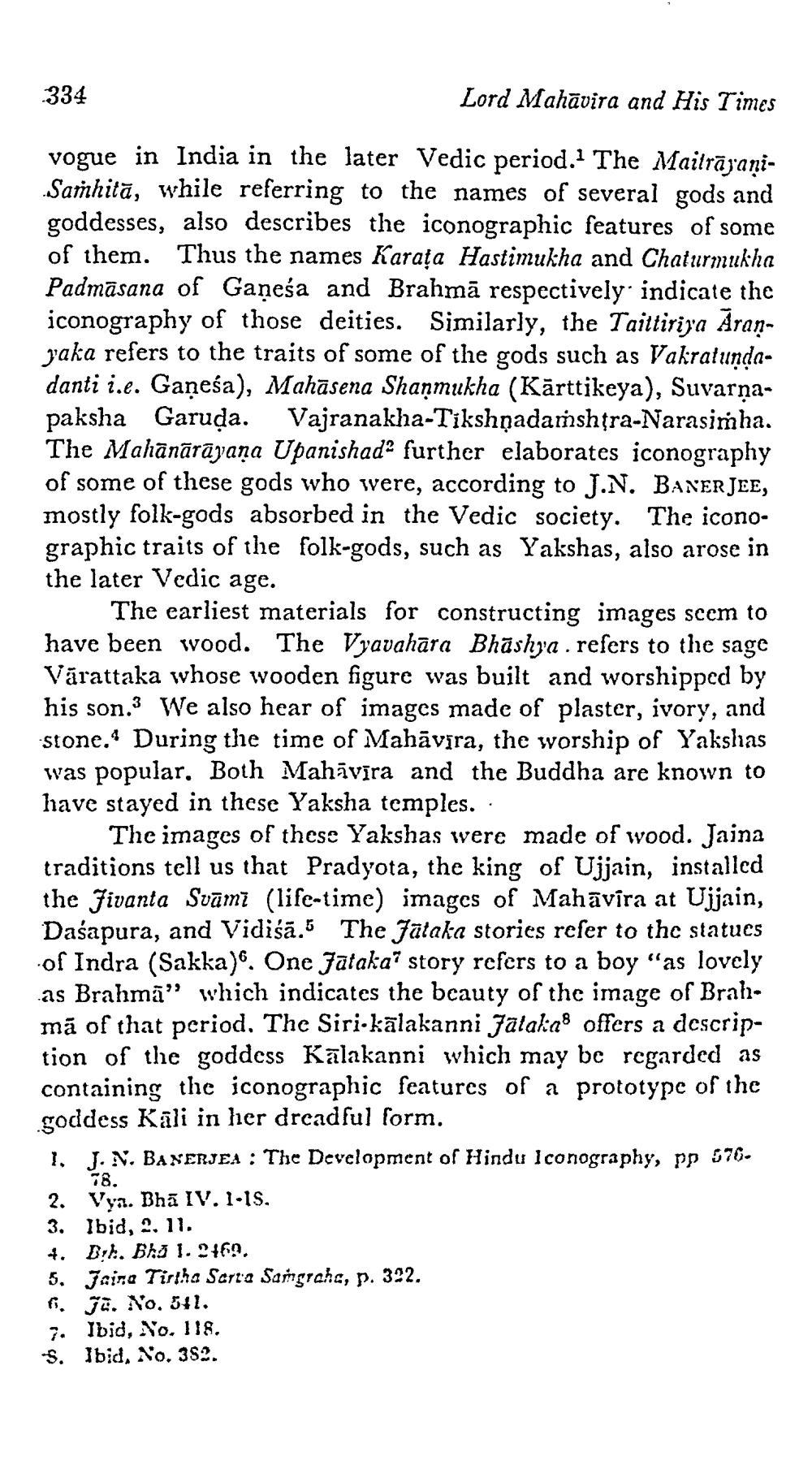________________
334
Lord Mahavira and His Times
vogue in India in the later Vedic period.1 The MaitrāyaṇiSamhita, while referring to the names of several gods and goddesses, also describes the iconographic features of some of them. Thus the names Karata Hastimukha and Chaturmukha Padmasana of Gaṇeśa and Brahma respectively indicate the iconography of those deities. Similarly, the Taittiriya Āranyaka refers to the traits of some of the gods such as Vakratundadanti i.e. Gaṇeśa), Mahāsena Shanmukha (Kārttikeya), Suvarṇapaksha Garuḍa. Vajranakha-Tikshṇadaṁshtra-Narasimha. The Mahānārāyaṇa Upanishad further elaborates iconography of some of these gods who were, according to J.N. BANERJEE, mostly folk-gods absorbed in the Vedic society. The iconographic traits of the folk-gods, such as Yakshas, also arose in the later Vedic age.
The earliest materials for constructing images seem to have been wood. The Vyavahāra Bhashya. refers to the sage Vārattaka whose wooden figure was built and worshipped by his son. We also hear of images made of plaster, ivory, and stone. During the time of Mahāvīra, the worship of Yakshas was popular. Both Mahavira and the Buddha are known to have stayed in these Yaksha temples.
The images of these Yakshas were made of wood. Jaina traditions tell us that Pradyota, the king of Ujjain, installed the Jivanta Svāmī (life-time) images of Mahāvīra at Ujjain, Dasapura, and Vidiśā.5 The Jātaka stories refer to the statues of Indra (Sakka). One Jātaka" story refers to a boy "as lovely as Brahma" which indicates the beauty of the image of Brahmã of that period. The Siri-kalakanni Jātaka offers a description of the goddess Kalakanni which may be regarded as containing the iconographic features of a prototype of the goddess Kali in her dreadful form.
1. J. N. BANERJEA: The Development of Hindu Iconography, pp 57678.
2. Vya. Bha IV. 1-1S.
3. Ibid, 2. 11.
4. Brh. Bha 1. 2469.
5. Jaina Tirtha Sarva Samgraha, p. 322.
6. J. No. 541.
7. Ibid, No. 118.
S. Ibid, No. 382.




